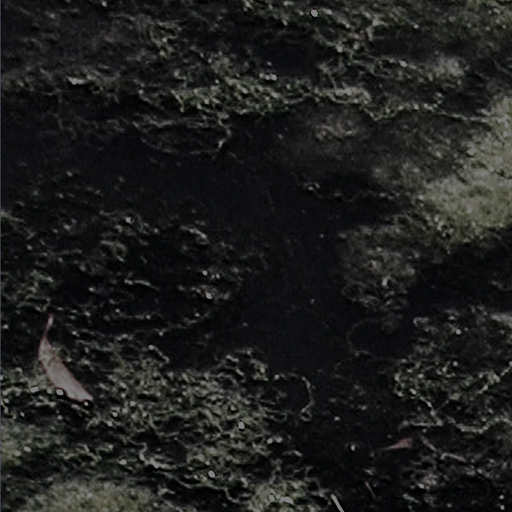




.jpg)
FLOATING TEXTURE
©2008 Steven Berkowitz /
Classic Ambient/ Organic/ Fluid Music
derived from leaves floating on water
photographed on the grounds of Zen Temples
in Kyoto and Tokyo, Japan
This water music is great for relaxation or contemplation yet is compelling and inspires positive thought. The Floating Texture music is also useful for any physical therapy that requires a relaxed state.
The inspiration for this music is three photographic series of leaves floating in water. The Floating Texture recording is a combination of three separate scores, written to interweave through time. It is very dense and atmospheric and is just as much about texture as harmony.
The full piece is exhibited in art galleries where both photographic images and sound images are presented together. Each photo set has its own sound system. Each sound score is generated by the organic forms in the photos. The process of translating an image from the visual to the aural domain is called ‘Sonification’.
These photos are analyzed by computer using ‘Sonification’ to translate their structure into sound. More specifically, the placements of the leaves in visual space are used to determine the placement of notes in musical space. Because the source is organic structure, the resulting music is a very fluid experience.
The music from each photo set is translated using a different approach:
•The Water Stem composition uses the locations of the stems branching into two sections to determine when the sounds of dripping water are played.
•The Pond Moss composition follows the aesthetic of ‘Tone Clusters’ where so many notes are played at once they can no longer be heard as individual sounds but become part of a ‘cloud of tones’ with a distinct musical texture. The composition appears monistic yet has internal plurality. This models a philosophy of seeing the world as a unified entity. [see ‘Lateral Imaging’>]
•The Floating Lotus composition is an example of 'Extended Tonality' where the round shapes of the lotus leaves floating in water generate long low tones that float in the air.
Another detail of the Floating Texture piece is the use of a sample of a Suikinkutsu, a Japanese musical instrument that uses dripping water to play notes. This was recorded at the Tea House of the Hosen-in Temple in Ohara, outside Kyoto, Japan. All other instruments are designed by the composer to include some element of a water sound.
All of these pieces also employ a ‘Slow Evolution’ through ‘Extended Time’. This time between the ticks of the clock is the environment of the Floating Texture music. Berkian music resides in Extended Time and creates a condition of listening that taps the deepest resources. It removes the listener from present time and place, allowing the imagination to move into new realms.
The slow evolution of the composition seduces the listener into a more intimate relationship with the music. This music links artist and audience, suspending them on a journey of shared emotions and source memories. As with dreams and myths, extended time music can overcome resistance to forgotten powers and images.
The scores from each photo sequence is a different length. All three pieces play as continuous loops on three separate sound systems. The scores line up differently as they loop, creating a Perpetual Intermix, always sounding similar but always different.
This CD is a recording of the mix on one particular day. To experience the real composition, you could purchase each individual sound piece and play them on three separate sound systems, spread around the room. This is how this piece is presented in an art gallery. This is also how Berkowitz has his living room set up. This is a true multi-media visual and sound experience. Another option is to purchase the DVD Audio version recorded in 5.1 surround sound audio.
The presentation of variations of a single image or related images compels the audience to use ‘Compound Perception’ to absorb all the information. This helps remove us from our typical linear mode of thought to employ lateral thinking (non-linear). When an image is perceived simultaneously through multiple senses, such as organic patterns of leaves and water presented as photographs and sound, an experience called ‘Synaesthesia’ can occur. This is a profound ecstatic mood. Since the sound is created by natural patterns the human body begins to vibrate with sympathetic vibrations. A ‘Resonance’ is created that intimately connects the artist and audience. This can be a powerful healing force and can become an emotional inspiration.
Lateral Imaging is a way of seeing the world. It is a philosophy that links our perception, conception, and emotion. Lateral Imaging views the world as a field of coincidental effects, each affecting all others in an intimate way. The music on this recording is written as a web of interactive phrases, each changing the way all the others are heard. The foreground and background are determined by where the listener focuses their attention as each individual note loses its identity to the whole. This is a self-referential system, i.e. Lateral.
The bottom line of this and all of Berkowitz’s work is to show how we are totally integrated with our world, not standing outside looking in. The patterns of nature are the same as the patterns of life in general. The patterns of our intellect determine our view of the world, i.e. our world creates us so we can create our world. This unity is the essence of Lateral Imaging. All is one.